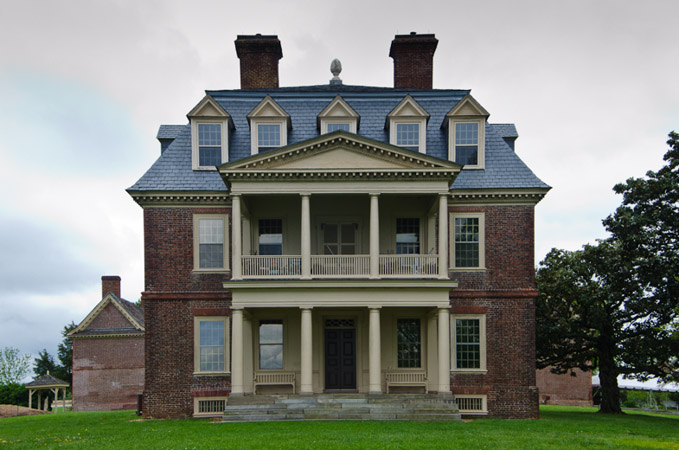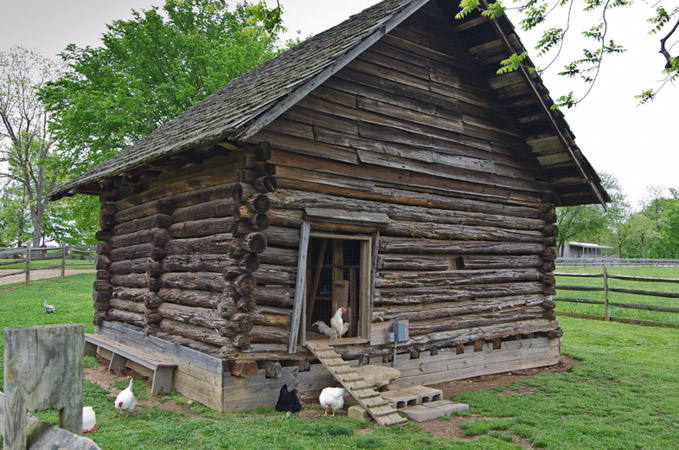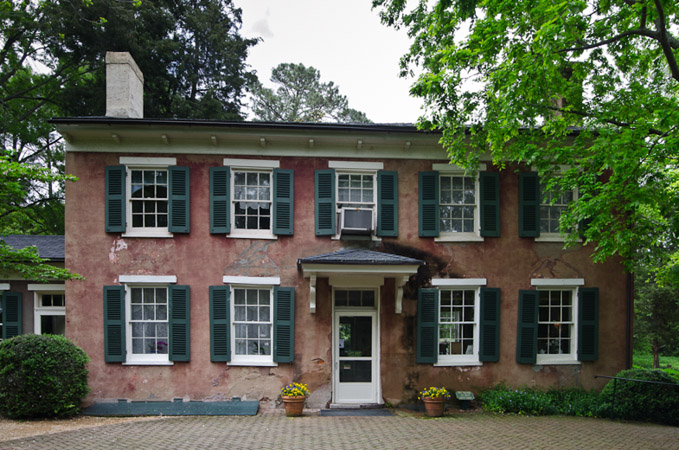Shirley Plantation
 A visit to Colonial Virginia would not be complete without a visit to at least two of the plantations prominent during the "Age of Enlightenment", Shirley and Berkeley plantations. Shirley Plantation was Virginia's first plantation established in 1613. Along the banks of the James River it has a family history going back 375 years. Descendents of the original Shirley family still reside at the plantation on the second floor of the original mansion.
A visit to Colonial Virginia would not be complete without a visit to at least two of the plantations prominent during the "Age of Enlightenment", Shirley and Berkeley plantations. Shirley Plantation was Virginia's first plantation established in 1613. Along the banks of the James River it has a family history going back 375 years. Descendents of the original Shirley family still reside at the plantation on the second floor of the original mansion.
The passing of years and a lack of funding has allowed the grandeur of the original plantation to diminish. Although historically significant we found the mansion and grounds to be rather stark and cold with very little decorative fauna.
The rear entrance to all the period plantation mansions were just as elaborate as the front entrances as the main traffic highway were the rivers that ran along the rear of the properties. Since the advent of modern roads the rivers were no longer used as the main thoroughfares.
Over time the pathways from the river to the rear entrances to the plantation mansions disappeared. 
The trees, brick knee walls and stone paths all gone with the passing of time. The area mansions don't have the grand staircases like the grand plantation mansions of the deep south depicted in movies like "Gone with the Wind".
Thomas Jefferson's influence's of conservative architecture, had an affect on the design of many of the areas plantation mansions, wide staircases cost extensive heat lost in grand staircases, You can see the European influences, particularly from Paris, in the door, window and room moldings.
Berkeley Plantation
 Berkley Plantation built in 1726 is a bright and cheerful mansion that has an interesting history. In 1621 to 1622 the first Bourbon Whiskey in America was distilled at Berkeley Plantation. George McClellan quartered 140,000 Union Soldiers at Berkeley Plantation during the civil war and "Taps" was composed at Berkeley in 1862 while Union Forces were encamped at the plantation.
Berkley Plantation built in 1726 is a bright and cheerful mansion that has an interesting history. In 1621 to 1622 the first Bourbon Whiskey in America was distilled at Berkeley Plantation. George McClellan quartered 140,000 Union Soldiers at Berkeley Plantation during the civil war and "Taps" was composed at Berkeley in 1862 while Union Forces were encamped at the plantation.
Prior to the civil war Berkley Plantation had about 130 slaves for its operation. An inventory of the slaves indicated their age and the value of each slave. The slaves worth varied between nothing for an indigent slave and £100.00 British pounds for a skilled blacksmith slave.
The average slave was worth £65.00 to £70.00 British pounds. I found it difficult to find the exchange rate of the British Pound around  the 1700's although Jefferson's plantation indicated they sold a skilled blacksmith slave for $400.00.
the 1700's although Jefferson's plantation indicated they sold a skilled blacksmith slave for $400.00.
Considering the average wage in the late 1700's was about $40.00 per year you can see that for a slave to purchase his/her freedom was near impossible. An interesting sidelight to the slavery issue was that in the early 1700's British indentured servants were the main labor supply, about ten to one.
Berkley plantation hosted lavish parties for high society, and included George Washington among the party goers. The James River was the main traffic thoroughfare and the Berkley Plantation port was called Harrison's Landing. The Harrison's were part of the mover and shaker crowd.
Benjamin Harrison, son of the builder of Berkeley, and it's second owner, was a signer of the Declaration of Independence and three time Governor of Virginia.
William Henry Harrison; Benjamin's third son, born at Berkeley, was the famous Indian fighter known as "Tippecanoe," who later became the ninth president of the United States in 1841. The campaign slogan was "Tippecanoe And Tyler To," and John Tyler,vice president, became the tenth president after Harrison's death. His grandson Benjamin Harrison, was the 23rd President.
William Henry Harrison died after one month in office. Popular opinion was that Harrison died of pneumonia although current forensics have indicated he may have died from poisoning. Click here to see the slideshow.